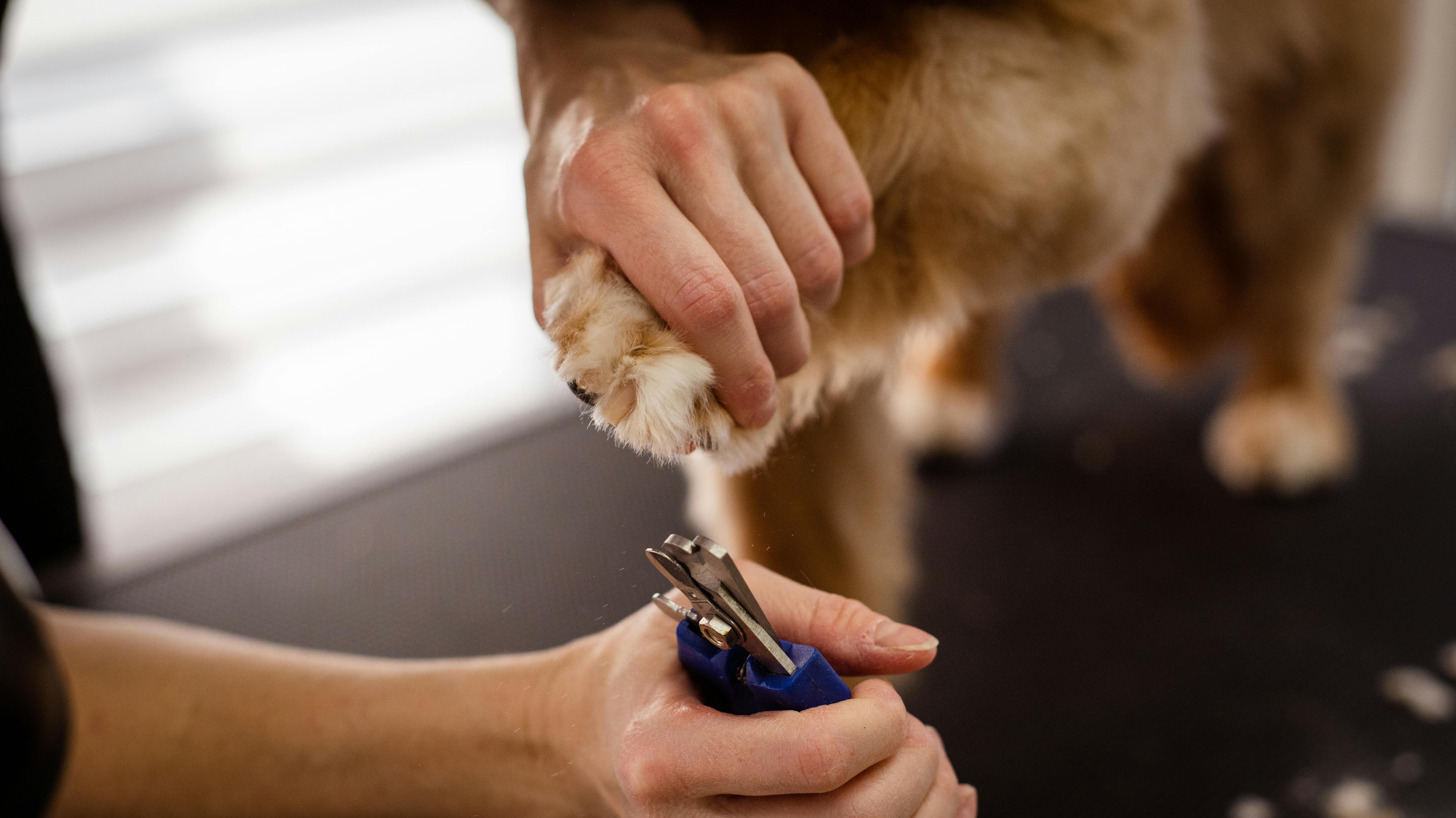OUR LATEST POSTS

Grooming Essentials: Keeping Your Pet Clean and Happy
Grooming is an essential part of pet care that goes beyond aesthetics. Regular grooming not only keeps your pet looking their best but also contributes to their overall health and happiness. Whether you have a dog, cat, or other furry companion, proper grooming practices help maintain their skin, coat, nails, ears, and even mental well-being.
In this blog, we'll explore the essential aspects of grooming, why it's important, and tips on how to keep your pet clean, healthy, and content.
1. Brushing Your Pet’s Coat
Why It's Important: Regular brushing helps prevent matting, removes dirt and dead hair, and distributes natural oils that keep your pet’s coat shiny and healthy. It also provides a great opportunity to bond with your pet.
How Often:
Dogs: The frequency of brushing depends on the breed and coat type. Long-haired dogs, like Golden Retrievers or Collies, need daily brushing, while short-haired breeds may only require weekly grooming.
Cats: Even though cats groom themselves, regular brushing (especially for long-haired cats) can reduce shedding and prevent hairballs.
Tools to Use: For dogs and cats, choose the right brush for their coat type. A slicker brush works well for removing tangles in long-haired pets, while a bristle brush is effective for short-haired breeds.
Pro Tip: Make brushing a positive experience by offering treats and praise to help your pet associate grooming with positive reinforcement.
2. Bathing Your Pet
Why It's Important: Bathing your pet helps keep their coat clean, removes odors, and can help with skin conditions like allergies or dry skin. However, over-bathing can strip their coat of essential oils, leading to dryness and irritation.
How Often:
Dogs: Most dogs benefit from a bath once every 4 to 6 weeks. Dogs that spend more time outdoors or have oily coats may need more frequent baths.
Cats: Cats are generally good at self-grooming and may only need a bath if they get especially dirty or have a skin condition.
Tools to Use: Use pet-specific shampoos and conditioners, as human products can irritate their skin. For dogs, a detachable showerhead or bucket can make rinsing easier, while a non-slip mat in the tub helps prevent accidents.
Pro Tip: Use lukewarm water and be gentle, avoiding the eyes and ears. Towel-dry your pet thoroughly, especially in cooler weather, and use a pet-safe blow dryer if needed.
3. Nail Trimming
Why It's Important: Keeping your pet’s nails trimmed prevents discomfort, pain, and potential injury. Overgrown nails can lead to difficulty walking, and in severe cases, they can curl and grow into the paw pads.
How Often: Most pets, especially dogs, need their nails trimmed every 3 to 4 weeks. Indoor cats may need occasional nail trimming, while outdoor cats often wear their nails down naturally.
Tools to Use: Use pet nail clippers or a nail grinder designed for pets. Always be cautious to avoid cutting the "quick," a sensitive area within the nail that contains blood vessels.
Pro Tip: If you're new to trimming your pet's nails, start slowly and cut just the tips. You can also ask your vet or groomer to show you how to do it safely.
4. Cleaning Ears
Why It's Important: Ear cleaning helps prevent infections, especially in pets with floppy ears, like Cocker Spaniels or Basset Hounds, which are prone to trapping moisture and debris. Regular cleaning also removes excess wax and keeps ears healthy.
How Often: Check your pet's ears once a week for signs of dirt, redness, or odor, and clean them as needed, typically every 2-4 weeks.
Tools to Use: Use a vet-recommended ear-cleaning solution and cotton balls or gauze. Never use cotton swabs, as they can damage the ear canal.
Pro Tip: Be gentle when cleaning, and if you notice any signs of infection (redness, foul odor, excessive scratching), consult your vet.
5. Dental Care
Why It's Important: Dental hygiene is essential for preventing plaque buildup, bad breath, gum disease, and tooth loss. Poor oral health can also lead to more severe health issues, such as heart or kidney disease.
How Often: Ideally, brush your pet's teeth daily. If that’s not possible, aim for at least 2-3 times per week.
Tools to Use: Use a pet-specific toothbrush and toothpaste (never use human toothpaste). You can also provide dental chews or toys that help clean teeth naturally as they chew.
Pro Tip: Start brushing your pet’s teeth gradually, offering plenty of treats and praise to build their tolerance. Dental wipes and rinses are alternatives if brushing proves challenging.
6. Trimming Fur Around Sensitive Areas
Why It's Important: Trimming the fur around sensitive areas like the eyes, ears, paws, and rear end prevents dirt accumulation and discomfort. For some pets, long fur around the eyes can cause irritation or obstruct their vision.
How Often: As needed, depending on the breed and how fast the hair grows. Regular trimming around the paws also helps prevent mats and keeps your pet comfortable.
Tools to Use: Use grooming scissors with rounded tips for safety. For paw pads, a small clipper or trimmer can make the process easier.
Pro Tip: If you're nervous about trimming your pet’s fur, especially around sensitive areas, a professional groomer can help with these delicate tasks.
7. Grooming for Mental Health
Why It's Important: Grooming isn't just about physical cleanliness—it's also essential for your pet's mental well-being. Regular grooming sessions can be a calming, bonding experience between you and your pet. It reduces anxiety, helps pets feel secure, and provides an opportunity to check for any abnormalities like lumps, ticks, or rashes.
How Often: Incorporate gentle grooming into your daily or weekly routine, depending on your pet’s needs.
Pro Tip: Approach grooming sessions with patience and gentleness. Use positive reinforcement techniques to make the process enjoyable for your pet, turning it into a rewarding bonding time.
Regular grooming is crucial for keeping your pet clean, healthy, and happy. By establishing a grooming routine, you can prevent many common health problems and ensure that your furry friend looks and feels their best. From brushing their coat to trimming their nails and maintaining their dental hygiene, grooming plays a vital role in their overall well-being. Plus, it’s an excellent opportunity to strengthen your bond and show your pet how much you care.
With a little time, patience, and the right tools, you can turn grooming into a positive and enjoyable experience for both you and your pet, ensuring they stay healthy and happy for years to come.
One or more of the links above are affiliate links, meaning, at no additional cost to you, we will earn a slight commission if you click through and make a purchase. Each of these products is chosen by a trusted member of our team.
NOURISH & NUZZLE
Wellness for humans, love for pets.

partnerships@nourishandnuzzle.com
